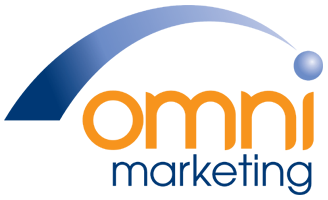Table of Contents

Key Takeaways: Achieving High Search Traffic with Targeted Strategies
- Understand your audience to create content that addresses their specific needs and interests.
- Use SEO research tools to find keywords that will help your content rank higher in search engine results.
- Consistently create and publish quality content to establish authority and keep your audience engaged.
- Leverage internal linking to keep visitors on your site longer and reduce bounce rates.
- Track your results with analytics to refine your strategy and focus on what works.
When it comes to your online presence, the content you create is the voice of your brand. It’s how you communicate with your audience, share your expertise, and ultimately, drive traffic to your website. But not just any content will do. To really see an increase in search traffic, you need targeted content—content that speaks directly to the needs and interests of your audience. Let’s dive into how you can craft such content and see your website’s traffic soar.
Unlocking the Potential of Targeted Content
What is Targeted Content?
Targeted content is the strategic creation of website material that caters to the specific interests or needs of a particular audience segment. It’s about crafting messages that resonate on a personal level, making your readers feel understood and valued. This is the kind of content that not only gets clicked on but also gets shared, discussed, and acted upon.
Why Search Traffic Matters for Your Business
Before we get into the how-to’s, let’s talk about why increasing search traffic is crucial for your business. Search traffic is composed of visitors who find your website after using a search engine like Google. These users are often looking for answers or solutions, which means they’re already interested in what you have to offer. Attracting more of these users increases the chances of converting them into customers.
Researching Your Audience
Finding Your Ideal Customer
Knowing who you’re talking to is the first step in creating targeted content. You want to get into the minds of your ideal customers: What are their hobbies? What challenges do they face? What kind of language do they use? Understanding these aspects allows you to tailor your content to speak directly to them.
For instance, if you’re selling eco-friendly cleaning products, your target audience might be environmentally conscious parents. Your content should then focus on topics like ‘non-toxic home cleaning tips’ or ‘how to make DIY green cleaning solutions.’
Now, how do you find out more about your audience? There are several ways: integrating search engine optimisation into your content strategy.
- Surveys and feedback forms on your website
- Engagement and comments on your social media channels
- Google Analytics to track visitor behavior
- Keyword research tools to see what people are searching for
These methods will give you valuable insights into your audience’s preferences and behaviors, guiding your content strategy effectively.
Tools and Techniques for Audience Research
Once you have a clear picture of your ideal customer, it’s time to dig deeper with audience research tools. Tools like Google Analytics and SEMrush can reveal not just who your audience is but also how they interact with your website and content. They can help you identify:
- The demographics of your site visitors
- The type of content that attracts the most engagement
- Keywords that are driving traffic to your competitors
With this information, you can refine your content to better match your audience’s search intent and preferences.
Maximizing Engagement Through Content Format
Engagement is the currency of the web. When your content engages a reader, it can lead to longer site visits, more shares, and increased trust in your brand. But what engages one audience might not engage another, which is why understanding your audience’s preferences is key.
Think about the format of your content. Does your audience prefer quick, actionable listicles or in-depth, well-researched articles? Maybe they’re drawn to infographics or video tutorials. Use your audience research to determine the best format for your message. Remember, a well-chosen format can dramatically improve the stickiness of your content.
- How-to guides and tutorials
- Listicles with practical tips
- Infographics summarizing key information
- Videos demonstrating products or techniques
For example, a step-by-step guide with images can be incredibly effective for DIY or craft-oriented audiences. The key is to match the format to the content’s purpose and the audience’s expectations.
SEO Best Practices for Targeted Content
SEO is a critical piece of the targeted content puzzle. It’s the process of optimizing your content to be found by search engines and served to the right users. When your content ranks well for specific keywords, you’re more likely to attract visitors who are searching for exactly what you offer.
Choosing the Right Keywords
Keywords are the signposts that tell search engines what your content is about. But it’s not just about picking any keywords; it’s about choosing the right ones that your target audience is using in their searches. Use keyword research tools like Google Keyword Planner or Ahrefs to discover the terms your audience is looking for.
Once you’ve identified your target keywords, incorporate them naturally into your content. This includes using them in the title, headers, and throughout the body of the text. But beware of keyword stuffing; your primary goal is to create readable, valuable content that just happens to include your keywords.
Optimizing Meta Tags and Descriptions
Meta tags and descriptions play a crucial role in SEO. They’re the first thing users see in search results, so they must be compelling and include your target keywords. A well-crafted meta description can be the difference between someone clicking on your content or scrolling past it.
Ensure your meta tags accurately describe the content of the page and that your meta descriptions are enticing, giving a preview of what the reader can expect to find if they click through.
Internal Link Building Strategies
Internal links are links that go from one page on your website to another. They help search engines understand the structure of your site and the relationships between your content. They also keep readers engaged with your site longer by encouraging them to explore further.
Use internal links to connect your content in meaningful ways. For example, if you mention a topic that you’ve covered in-depth in another post, link to that post. Not only does this provide additional value to your reader, but it also helps search engines index your content more effectively.
Consistently Delivering Quality Content
Consistency is key in building a loyal audience and improving your SEO. It shows search engines that your website is a regularly updated resource for users, which can help improve your rankings.
Establishing a Content Calendar
A content calendar is a schedule that outlines when and what you’ll publish. It helps you plan out your content strategy, ensuring that you’re covering a variety of topics that interest your audience and that you’re posting regularly.
When setting up your content calendar, consider important dates that are relevant to your audience, like holidays or industry events, and plan your content around them.
Maintaining Content Freshness
Search engines favor fresh, up-to-date content. Periodically review your existing content and update it with the latest information, statistics, and trends. This not only helps with SEO but also shows your audience that you’re committed to providing them with the most current and accurate information.
For example, if you have a blog post about the best SEO practices from a few years ago, revisit it to include the latest changes in search engine algorithms and new tools that have emerged.
Amplifying Content Reach
Once you’ve created targeted content, it’s time to get it in front of as many eyes as possible. Amplification is about using various channels to spread your content far and wide.
Leveraging Social Media Platforms
Social media is a powerful tool for content distribution. Share your content on platforms where your audience is most active. Use engaging descriptions and eye-catching images to encourage clicks and shares.
It’s also important to engage with your audience on these platforms. Respond to comments, participate in discussions, and listen to feedback. This not only helps build a community around your brand but can also give you insights into what content your audience wants to see more of.
Effective Email Marketing Campaigns
Email marketing allows you to deliver content directly to your audience’s inbox. It’s a more personal way to communicate and share your content. Craft compelling email newsletters that highlight your latest posts or offer exclusive content to subscribers.
Remember to segment your email list so that you’re sending targeted content to different groups within your audience. Personalization can significantly increase open rates and engagement.
The Role of Influencers in Boosting Traffic
Influencers can give your content a significant boost by exposing it to their followers. Partner with influencers who share your brand’s values and have an audience that matches your target demographic.
When choosing influencers, look beyond the number of followers and consider their engagement rates and the relevance of their audience to your brand. A well-matched influencer collaboration can lead to a surge in traffic and new, engaged visitors to your site.
Analyzing and Adjusting Strategies
To ensure that your content not only reaches but also resonates with your audience, it’s vital to analyze its performance and adjust your strategies accordingly. Data-driven decisions can lead to improved content quality and a better understanding of what your audience truly wants.
Tracking Traffic with Analytics
Analytics tools like Google Analytics give you an in-depth look at how your content is performing. By analyzing metrics such as page views, bounce rate, and time spent on page, you can gauge user engagement. Most importantly, you can track which pieces of content are driving the most traffic to your website. This information is invaluable for refining your content strategy to focus on what works best.
Refining Content Based on Performance Metrics
Once you’ve collected data on your content’s performance, it’s time to refine. Look at the pieces that are performing well and ask yourself why. Is it the topic, the way it’s written, or the SEO strategies you’ve used? Conversely, consider content that’s not performing as well and think about how you can improve it. Perhaps it’s a matter of better targeting, updating outdated information, or enhancing the SEO.
Regularly revising your content based on these performance metrics ensures that your website stays relevant and engaging for your audience, thereby maintaining and increasing search traffic over time.
Final Take: The Compound Effect of Targeted Content
The compound effect of consistently delivering targeted content cannot be overstated. Each piece of content that you craft with your audience in mind builds upon the last, creating a rich, informative experience that search engines reward with higher rankings and that users reward with their trust and engagement. The more you tune into your audience’s needs and preferences, the more you’ll find your content working for you, drawing in traffic and driving results.
Frequently Asked Questions
How Often Should I Update My Content?
It’s best practice to review and update your content regularly. This could mean a monthly, quarterly, or bi-annual review, depending on the nature of your content. Always aim to keep information accurate and relevant to maintain trust with your audience and favor with search engines.
Can Social Media Really Increase My Website Traffic?
Yes, social media can significantly increase your website traffic. By sharing your content on social media platforms where your audience hangs out, you’re putting it directly in their line of sight. When they engage with your content, their followers see it too, which can lead to a viral effect.
What Are the Most Effective SEO Tools?
Some of the most effective SEO tools include Google Analytics for tracking website performance, Ahrefs for researching competitors and keywords, SEMrush for SEO auditing and insights, and Moz for overall SEO management. These tools provide a wealth of data that can help you optimize your content for search engines.
How Do I Know If My Content is Targeted Enough?
You’ll know your content is targeted if it’s reaching and engaging the right audience. Look at your analytics to see if the intended demographic is consuming your content. Also, monitor engagement metrics like comments, shares, and time on page to see if your content is resonating with readers.
What is the Best Way to Measure the Success of My Content?
The best way to measure the success of your content is through a combination of quantitative and qualitative metrics. Look at traffic numbers, engagement rates, conversion rates, and also gather feedback directly from your audience. Together, these metrics will give you a comprehensive view of your content’s performance.
Remember, the goal of creating targeted content is to increase search traffic by providing value that’s tailored to your audience’s needs. By following the strategies outlined in this article, you’re well on your way to achieving that goal. And if you’re eager to delve deeper into the world of content marketing and how it can benefit your local business, consider exploring Omni Marketing’s eService. Their expertise in content marketing can provide you with the insights and support needed to take your online presence to the next level. Learn more about how they can help you elevate your content strategy.
- Affordable Marketing Solutions: The Swansea Small Business Growth Plan Under £500/Month – 15 May 2025
- AI in Accounting Marketing: Leveraging Technology for Client Acquisition – 15 May 2025
- The Essential Legal Content Management System: Organize Your Thought Leadership for Maximum Impact – 14 May 2025






